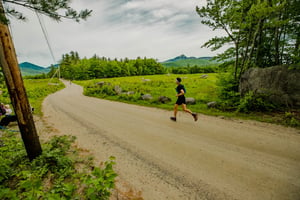What makes Steady State unique?
The Steady State Running Shoe Philosophy
The Steady State Running Shoe Philosophy:
The best shoes are the ones that are most comfortable for you! We recommend (and the research supports) not making shoe buying decisions based on your arch type or weight distribution on a scan. Comfort with running is the main key for shoe buying decisions with the goal of injury prevention.
For optimizing injury prevention in the long term, we want to make our bodies as durable as possible. How do we do that? We expose it to as many variations of physical load as possible. If our body is not currently used to these variations of load (certain type of shoe, doing faster running intervals, etc), then we expose our body to these loads in a slow, specific, & progressive way so that there isn’t too big of a change all at once. 80% of running-related-injuries are due to training errors, which is when we overload an area that isn’t recently used to getting that much load.
There’s a 39% reduction in running injuries just by having 2 or more pairs of running shoes in your rotation. Why? Exposure to different load distribution. While all of our leg muscles are working while we run, running with different amounts of support or cushioning or heel drop changes much much each muscle is challenged. We can extrapolate this 39% reduction in injury stat to assume that the more variation in shoes you have in your current arsenal, the better.
So we always recommend eventually progressing to being able to run in multiple brands of shoes, multiple models of shoes within a brand, and within that having different types of shoes in your rotation (varying heel drops, varying cushioning, varying amount of support, etc). I purposefully buy a different brand & model shoe every time I need to add a new shoe in my rotation - and I’m at the point where I can run comfortably in any type of shoe. As someone who was encouraged to run in custom orthotics when running in high school, I certainly wasn’t always this way!
The Steady State Shoe Insert Philosophy:
Inserts offer more support and act like a brace to keep our body moving in a certain way while we run or walk. Like a brace, this can be helpful if someone has a more acute injury where going into a certain position (more pronation) overloads the body to the point of pain/injury. This can help someone with an upcoming race “run through” an injury in the short term - as long as they know that this means certain areas of their body are relatively weak, and that they should be strengthening them.
However, if we stay in an insert or brace longer than short term, our body becomes adapted to needing this support as the insert provides what our muscles could do if they were strong enough. By being in an insert we aren't challenging our muscles as much, so they get weaker. Then your body becomes reliant on this additional support because it isn’t used to going without it. This can make other shoes or not wearing inserts become too much on the body and lead to other injuries. This makes the body less durable - aka more fragile - and more sensitive to variable changes.
Shoe/Insert Summary
- To make your body become as durable as possible in the long term and be able to withstand more activities and more variation in activity, we should expose it to as much variation in physical stress (load) as possible.
- We can do this by having numerous shoes in our current running rotation, with them ideally each being a different brand/model and have varying amounts of support, cushioning, and heel-drops. This leads to more durability & less injury risk!
- Inserts can be helpful with certain injuries in the short term, but they create a dependence on this support, which over time leads to weakening of our muscles that normally control this motion. This weakness, if not addressed with targeted strengthening & a slow weaning out of the inserts, ultimately make our body more fragile & therefore more susceptible to future running related injuries.




